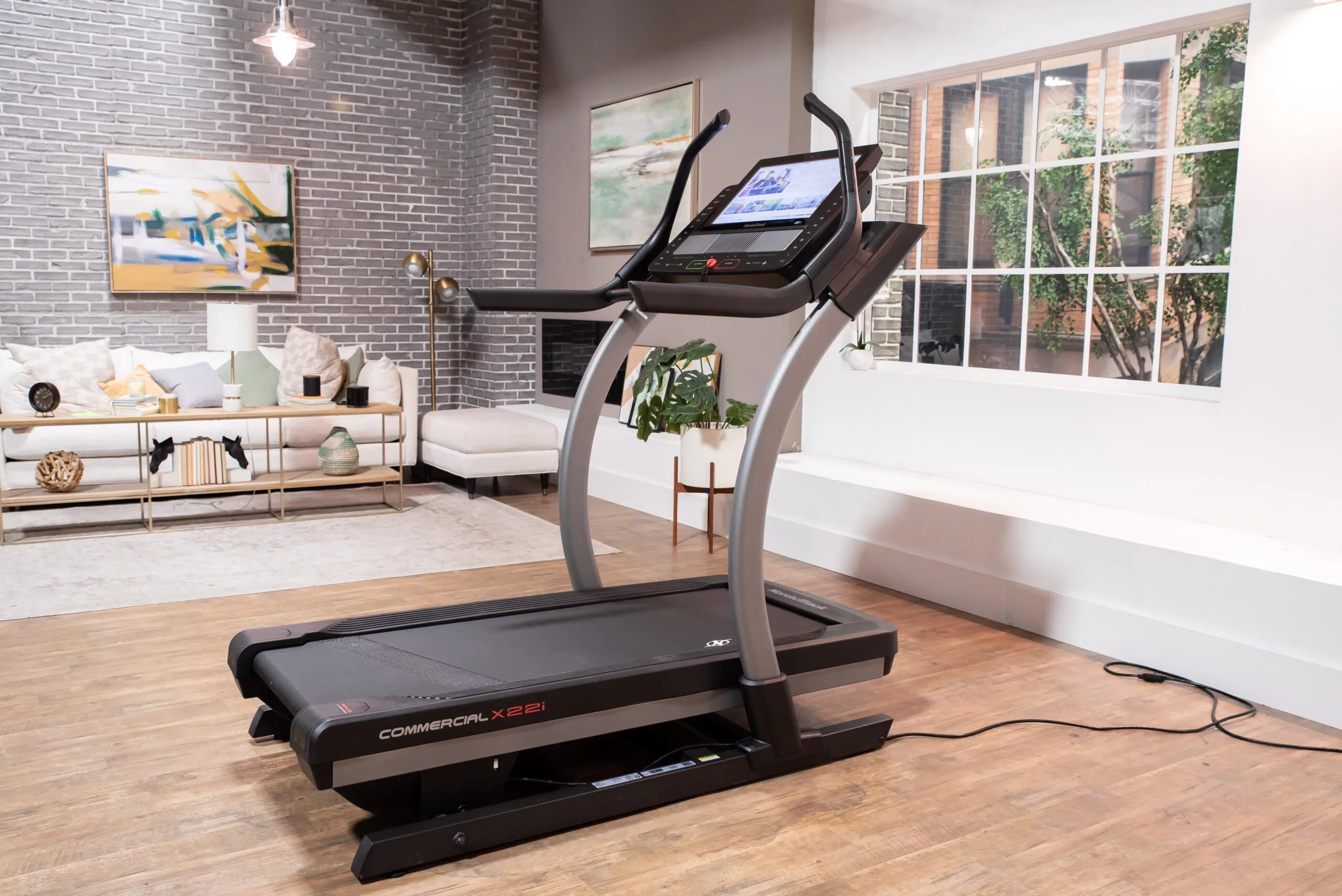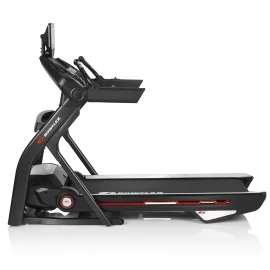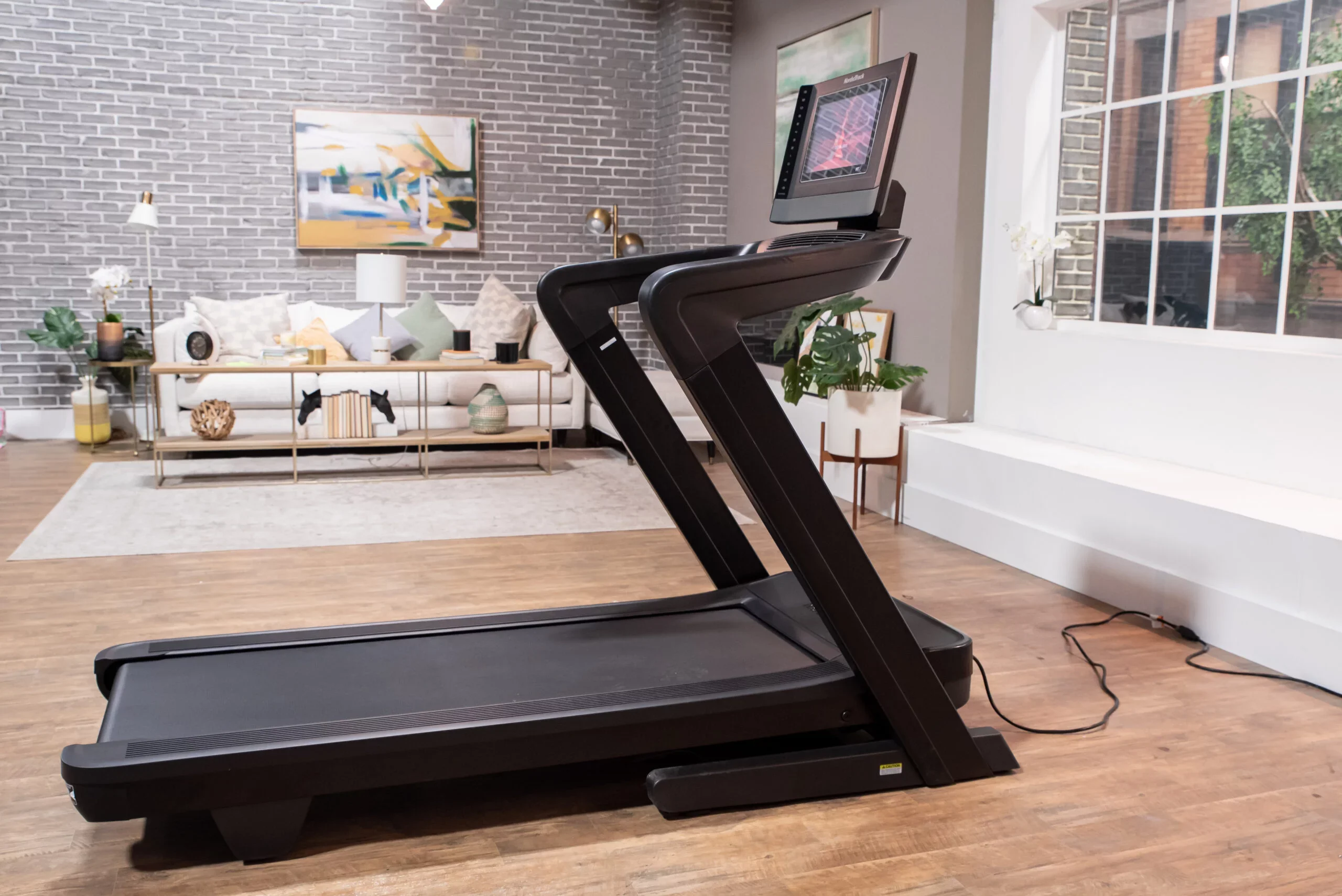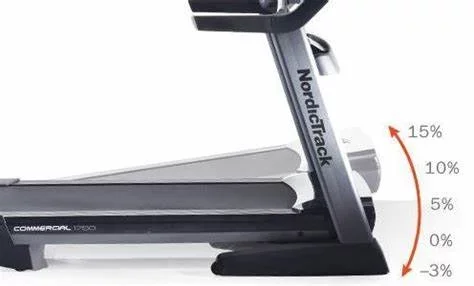Benefits of Decline Training on Treadmills
For every up there must be a down, right? These days higher-end treadmills come loaded with features. And while an incline option of up to 12% has been standard for some time, the option to walk and run at a decline is becoming more common. There’s no question that decline walking and running provide unique benefits to your body. Really, the question comes down to price and whether that option is worth it to you. The Sole TT8 brings the option of inclining up to 15% and declining down to -6% and costs $2,399. Meanwhile, a unit like the Horizon T202 offers 12% incline but nothing downhill and only costs $799.
With treadmill prices trending up these days, the value of going downhill becomes a legitimate question. As a treadmill runner myself I have to admit I love the decline function on my NordicTrack Commercial 1750 and wouldn’t trade it away. If you’ve never really thought about it before, read below to see why you should.
Decline Training Brings Benefits
An interesting piece of research I encountered while writing this proves there are indeed differences between the ups and downs. A study published in the journal Clinical Rehabilitation titled “Does Altering Inclination Alter Effectiveness of Treadmill Training for Gait Impairment After Stroke? A Randomized Controlled Trial” assesses whether downhill walking routines are better for chronic stroke survivors than incline training. A randomized controlled trial was designed where stroke survivors were assigned to physical therapy using either 30 minutes of treadmill work at a 5% incline or 5% decline. The measures used to determine effectiveness were improvement in the six-minute walking test in terms of gait speed. After just six weeks of treatment the results were clear, downhill training was much more effective.
But is it right for you, and if so, how much of it? Whereas incline training forces runners to engage the hamstrings, decline training focuses on the quadriceps. If you’ve ever tried walking down a steep hill you know the burn you feel in the front of your legs. These muscles are often ignored when leaning forward for sprints. And because your toes point down with the heel coming up while running at an incline, the calf muscle flexes in the opposite direction when training downhill. A study published in the journal Clinical Biomechanics is just one of many affirming that quadricep fatigue during decline work on a treadmill is real.
This is why alternating between incline and decline can provide a bit of a break to one set of muscles while working the other to exhaustion. If you like hard cardio but aren’t as interested in long runs, consider that alternating between incline and decline can exhaust you even at speeds as low as 3-5mph.
The downside to decline training is that too much can be damaging. Simply put, your body really wasn’t designed to run downhill for long periods of time. The research shows that running downhill over time can cause inefficiencies in movement, and so as with all things, moderation is key. But if you’re training for outdoor races where hills will be involved, you’ll want to incorporate the decline into your treadmill work.
For treadmill fans who train with interactive apps, nearly every one on the market features hill sprints, hiking, and walks up and down hills. One of my favorite walking series using the iFit program involves mountain hikes through Scotland. You can certainly engage this program on a treadmill without incline and decline features, but the great thing about treadmills built for iFit is the automatic trainer control that moves the deck up and down for you as you. With a decline function you can feel the real of going downhill as well as up.
Treadmills With Decline Options
I’ve never seen a treadmill offer decline without incline, and the units which offer both typically cost more than the average. The good news is they also come with lots of other features like bigger screens and more powerful motors. For a treadmill to offer the incline function it has to have better than average rollers in terms of size and a solid deck. While not exhaustive, below are a few of units available today that offer both incline and decline.
NordicTrack X22i
 |
|
A whopper in the world of incline and decline training, the NordicTrack X22i features a mountainous 40% incline as well as -6% decline. Built for iFit, the treadmill features automatic trainer control so you won’t have to manually control the resistance or speed while walking along to live or on-demand workouts. As you’re watching iFit routines on the 22” Smart HD Touchscreen, the incline and decline will automatically change in line with the Google Maps trail or other workout you’re tuned into.
Powering this treadmill is a 4.0 CHP motor. The unit comes with a Bluetooth chest strap for wireless heart-rate monitoring and Bluetooth audio capabilities.
See our detailed review of the NordicTrack X22i.
| Pros | Cons |
|---|---|
|
|
Key Specs
| Motor | 4.0 CHP |
|---|---|
| Incline | -6% – 40% |
| Running Area | 22” x 60” |
| Folding | No |
| Top Speed | 12 MPH |
| Weight Capacity | 300 LBS |
| Dimensions | 70” L x 39” W x 72.5” H |
| Screen | 22” Smart HD Touchscreen |
| Warranty | 10-Year Frame, 2-Year Parts, 1-Year Labor |
Bowflex T10
 |
|
If you’re looking for a more budget-friendly option, the Bowflex T10 comes in at just under $2,000 and still offers both a 15% incline as well as -5% decline. Frankly, that’s as much as the average person would ever need. Users get to experience the JRNY fitness app on the 10″ HD touchscreen and engage workouts around the world involving peaks and valleys. If fitness app training isn’t your thing, JRNY allows you to stream other apps like Netflix, Hulu, Amazon Prime, and more.
The Bowflex T10 features a solid 4.0 HP motor and can reach speeds up to 12mph, meaning you’re unlikely to outgrow this model. With a maximum user weight of 400 pounds, just about anyone can be satisfied.
See our detailed review of the Bowflex T10.
| Pros | Cons |
|---|---|
|
|
Key Specs
| Motor | 4.0 HP |
|---|---|
| Incline | -5% – 15% |
| Running Area | 22” x 60” |
| Folding | Yes |
| Top Speed | 12 MPH |
| Weight Capacity | 400 LBS |
| Dimensions | 85″ L x 39.6″ W x 65.3″ H |
| Screen | 10” HD Touchscreen |
| Warranty | 15-Year Frame, 5-Year Parts, 2-Years Labor, 1-Year Parts |
NordicTrack Commercial 1750
 |
|
With an incline/decline option of 15% to -3%, the NordicTrack Commercial 1750 hits a sweet spot for most users. Routinely a customer favorite, this treadmill wins accolades for all-around performance. Prominent features include a quiet 3.5 CHP motor, a 14″ HD iFit-enabled touchscreen which both tilts and pivots for interactive training and stats tracking, and Bluetooth audio for you to listen to all your favorite workout playlists.
Another great feature about this model is the Bluetooth-enabled ActivePulse Technology which allows the unit’s AI to adjust the incline/decline and speed to match your heartrate. This unit folds easily with a simple touch and can be rolled away when not in use.
See our in-depth review of the NordicTrack Commercial 1750.
| Pros | Cons |
|---|---|
|
|
Key Specs
| Motor | 3.5 CHP |
|---|---|
| Incline | -3 — 15% |
| Running Area | 22″ x 60″ |
| Folding | Yes |
| Top Speed | 12 MPH |
| Weight Capacity | 300 LBS |
| Dimensions | 80″ L x 38″ W x 65″ H |
| Screen | 14″ Smart HD Touchscreen |
| Warranty | 10-Year Frame, 2-Year Parts, 1-Year Labor |
The Verdict
Having the option to walk and jog at a decline is a bit of luxury, but once you’re used to incorporating it into your workouts, you won’t want to go without it. If you’re shopping in the mid- to upper-priced treadmill category anyway, I’d recommend making sure it’s an option. Why pay more for less? The opportunity to work both the quads and hamstrings more equally in the workout is just too great to pass up.
Frequently Asked Questions
Is decline running dangerous?
As with all exercise, there can be too much of a good thing. If you're not used to walking downhill you'll want to acclimate to the movement before doing it for long periods of time.
Are there a lot of workout routines where the decline can be used?
Yes, any of the mountain or hill work can utilize the decline function.
Why do treadmills with a decline function cost more?
The treadmill's deck and lift system has to be engineered differently to accomodate this movement.
Other Treadmill Reviews:
- Test HomePage
- NordicTrack Commercial X14i
- Echelon Stride
- NordicTrack C 590 Pro
- NordicTrack T 7.5 S - Pros & Cons (2024)
- Sole TD80 Treadmill Desk
- NordicTrack Commercial X11i
- NordicTrack T 8.5 S - Pros & Cons (2024)
- Horizon Elite T5
- Exerpeutic TF1000
- NordicTrack T 6.5 S - Pros & Cons (2024)
- ProForm Sport 5.0
- ProForm Premier 900
- ProForm ZT6
- NordicTrack FreeStride Trainer FS5i (Discontinued)
- Bowflex Max Trainer M5
- BowFlex TreadClimber TC100
- ProForm Power 795
- ProForm Sport 7.0
- NordicTrack Incline Trainer X15i
- NordicTrack C 1650 Treadmill
- Horizon Elite T9
- Official Boston Marathon Treadmill 4.0
- NordicTrack Treadmill Desk
- NordicTrack C 1630 Pro
- NordicTrack C 970 PRO
- Bowflex TC20 TreadClimber



 $3,499
$3,499  $3,199
$3,199  $3,499.99
$3,499.99  $1,999
$1,999